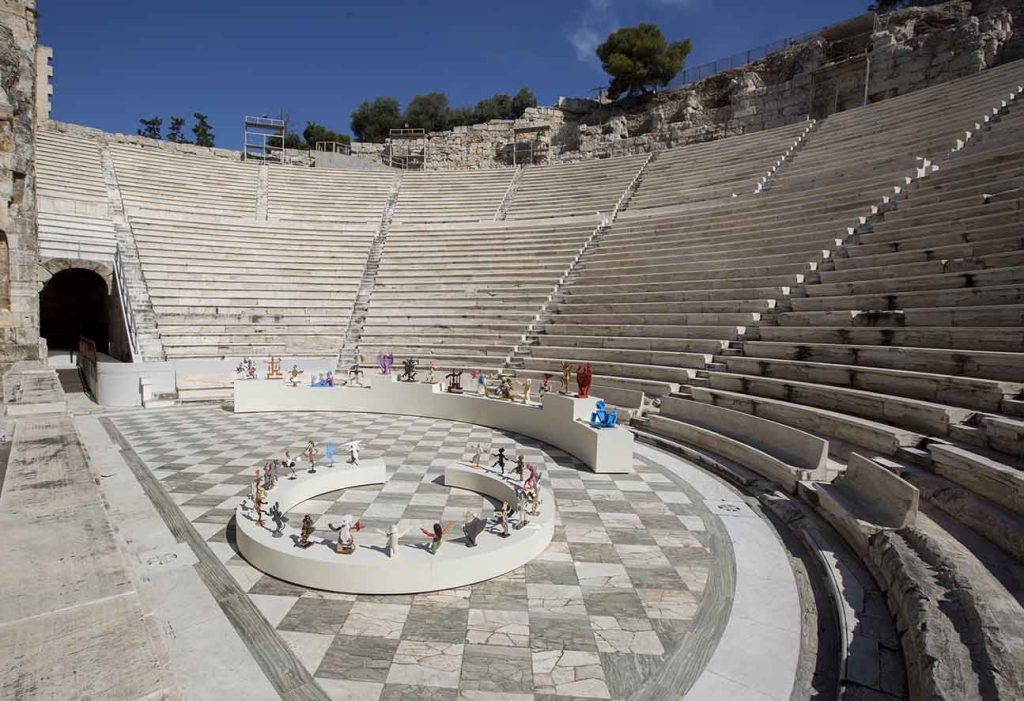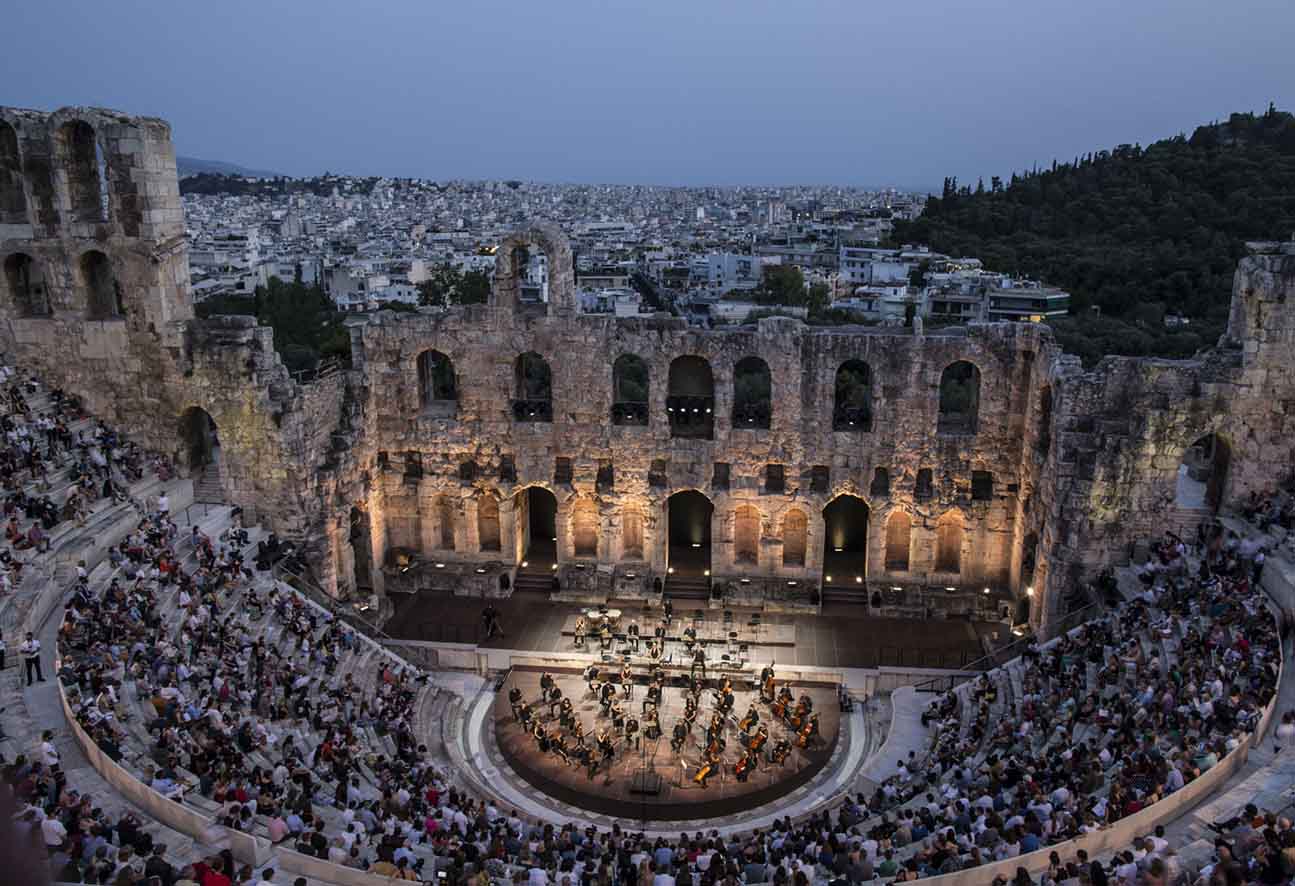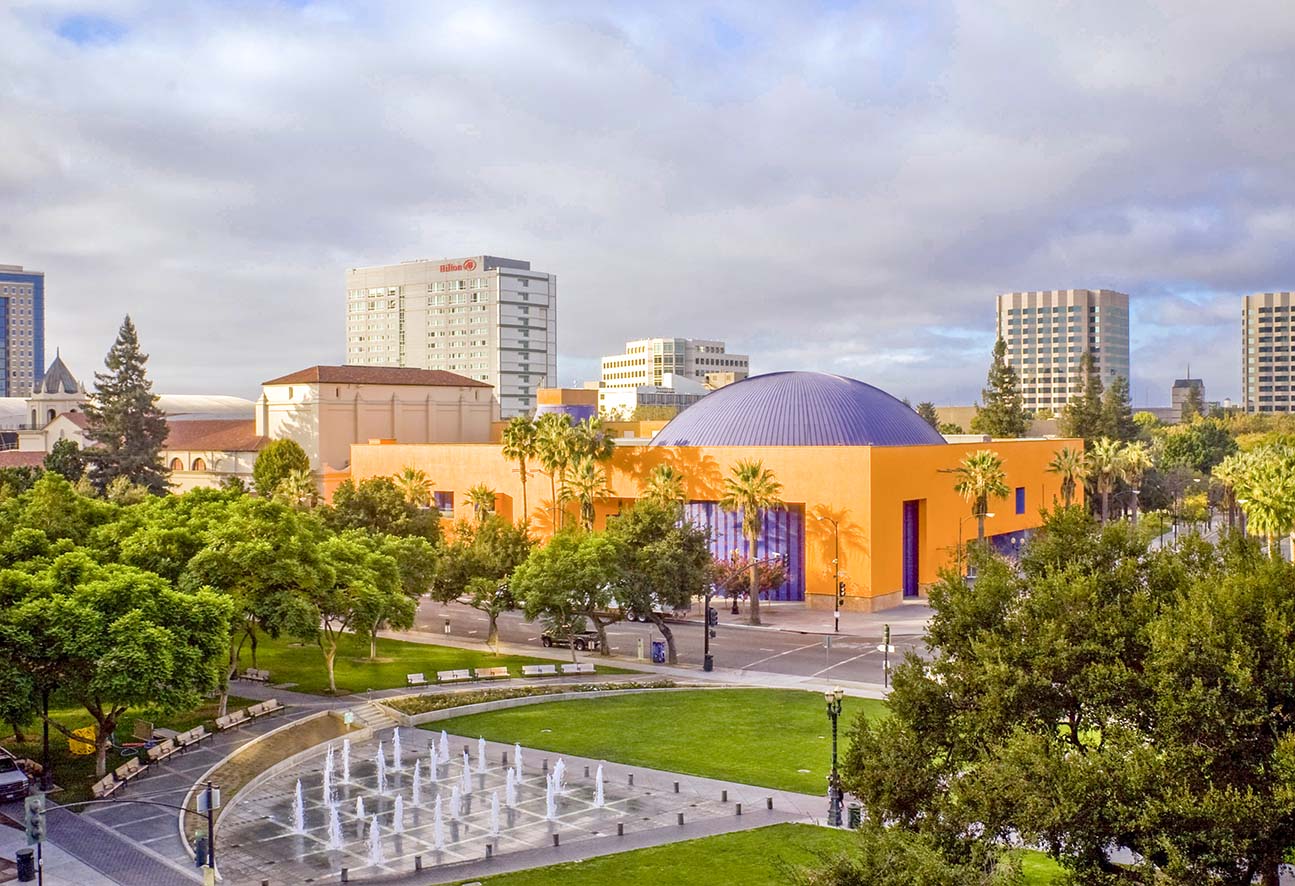As night falls over Athens and the hustle and bustle of the city quiets down, the ancient Odeon of Herodes Atticus quietly lights up, waiting for audiences from around the world. Sitting on the stone steps of a theater built over two thousand years ago, looking up at the stars, you can experience a Greek tragedy, modern dance, a symphony concert, or an international performance. This is not just an artistic experience but a conversation across millennia of history.
I’ll take you on a tour of Athens’ most iconic cultural event, the Epidaurus Music Festival. From ticketing to show experience, cultural context to practical tips, everything you need is here. Get ready to spend a summer night under the stars in Athens in the most ceremonial way possible.
1. What is the Athens Epidaurus Festival?
1.1 History and Origins
Founded in 1955, the Athens Epidaurus Festival is one of Greece’s most prestigious annual arts festivals and one of the oldest cultural events in Europe. Its original purpose was to rekindle Greece’s cultural enthusiasm during the post-war reconstruction period and showcase the endless artistic vitality of this land to the world.
1.2 Dates and Duration
The festival usually runs from June to September each year, with a variety of performances throughout the summer, including drama, opera, classical music, modern dance, and contemporary performing arts. The event is not limited to Athens, as it also extends to the ancient Epidaurus Theater in the Peloponnese, creating a “double-city” festival.
1.3 Characteristics and Status
Unlike other European arts festivals, the Athens Epidaurus Festival is unique for its historic venues. Watching a performance in ancient theaters at the foot of the Acropolis is more than just a show—it’s an “immersive heritage experience.” The festival brings together top international artists and local performers, making it a cultural highlight of the European summer that cannot be missed.
2. Odeon of Herodes Atticus: A Meeting Point of Performance and History
2.1 Theater Overview
The Odeon of Herodes Atticus, built in AD 161 by the Roman politician Herodes Atticus in memory of his late wife, is a typical Roman-style open-air theater. Built into the hillside and facing the Acropolis, it is part of the Acropolis complex in Athens.
2.2 Capacity and Structural Features
The theater can accommodate about 5,000 spectators. Its marble seats are arranged in a fan shape, providing excellent acoustics. Despite its age, it is still actively used as a performance venue, making it one of the few active heritage sites in the world.
2.3 Iconic Performances
Many international masters have performed here during the festival: Maria Callas, Luc Besson, Pina Bausch, the London Symphony Orchestra, and the Moscow Ballet have all graced its stage. The venue’s dual charm of history and art makes every performance feel like a solemn and moving ritual.

3. Types of Performances and Annual Highlights
3.1 Drama Performances
Greek tragedies and comedies are particularly fitting for this setting. You can enjoy classic works by Euripides, Sophocles, and other playwrights such as Medea, Antigone, and Prometheus Bound, performed by local or international theater groups, often with English subtitles.
3.2 Opera and Classical Music
There’s nothing more romantic than listening to the arias from Carmen or Turandot under the stars. The Greek National Opera and other international music ensembles frequently perform a mix of classic and contemporary works.
3.3 Dance and Modern Art
Modern dance is also an integral part of the festival. Dance troupes such as the Pina Bausch Company and the Dutch National Ballet have performed here. Experimental theater and cross-genre performances have also become favorites for younger audiences.
3.4 International Collaborations and Cross-genre Performances
In recent years, the festival has focused on intercultural dialogue, featuring collaborations with traditional art forms such as Japanese Noh, Indian Kathak dance, and African drumming. Art knows no boundaries, and here, it is beautifully demonstrated.
4. How to Buy Tickets and Plan Your Visit
4.1 Official Ticket Channels
The best way to purchase tickets is through the official festival website. The website provides a detailed schedule, performance languages, ticket prices, and seating charts, with online payment available by credit card.
4.2 Ticket Prices and Seating Options
Ticket prices range from €20 to €120, depending on the seat’s proximity to the stage and whether it’s in a VIP area. Most central seats are priced between €40-60, offering good value for first-time attendees. It’s recommended to buy tickets at least a month in advance, as popular performances can sell out early.
4.3 Group and Special Discounts
Some performances offer discounted tickets for students, seniors, and people with disabilities. There are also family tickets and four-person packages available. Check the website for more details.
5. Practical Performance Tips
5.1 Entry and Precautions
Performances typically start at 20:30, and it’s recommended to arrive at least 1 hour early, as security checks are thorough. You may bring a light seat cushion (the marble seats are hard), bottled water, and small snacks. Photography and filming are prohibited, and phones must be set to silent.
5.2 What to Wear and Bring
Wear comfortable summer clothes, and bring a shawl or light jacket as the temperature can drop at night. The theater is an open-air venue with no roof cover, so it’s also advisable to carry a small portable raincoat just in case.
5.3 Performance Language and Subtitles
Most performances are in Greek, but many provide English subtitles. The official website will indicate whether a performance has subtitles, so be sure to check before purchasing tickets.
6. Recommended Surrounding Cultural Activities
6.1 Nighttime Visit to the Acropolis Museum
Before the performance, a visit to the new Acropolis Museum is highly recommended. Located just a short walk from the Acropolis, the museum provides a unique opportunity to explore artifacts from ancient Greece, including sculptures from the Parthenon. The museum’s architecture, designed by Bernard Tschumi, offers breathtaking views of the Acropolis itself. On some evenings, the museum remains open until 20:00, providing an intimate setting to explore the history and culture of Athens. Visiting the museum before the performance enhances the overall cultural experience, making it the perfect prelude to a magical night under the stars.
6.2 Walking and Dining in Plaka
The Plaka district, located just beneath the Acropolis, is one of Athens’ most charming and historic neighborhoods. Whether you’re attending the performance or simply looking to enjoy an evening out, Plaka offers narrow streets lined with traditional Greek tavernas, boutique shops, and cafes. The atmosphere in the area is vibrant, especially after sunset, when the neighborhood lights up in a warm glow. Enjoy a leisurely walk through the quaint alleys and dine at one of the many authentic Greek restaurants such as Daphne’s or Scholarchio. These spots serve delicious local dishes in a romantic, candlelit setting—ideal for a memorable evening.
6.3 Acropolis Night Photography
As the sun begins to set, Filopappou Hill offers some of the most spectacular views of the Acropolis, providing the perfect opportunity for photographers to capture the grandeur of this ancient site with the golden hues of dusk. The hill is a peaceful retreat away from the bustle of the city, offering a panoramic perspective of Athens. At night, the Parthenon and the surrounding monuments are bathed in soft lighting, creating an ethereal atmosphere. For those with a camera in hand, the Roman Agora is another prime location to photograph the illuminated Parthenon. This is an unforgettable experience for both casual visitors and serious photography enthusiasts.

7. Athens-Epidaurus Link: A Two-City Journey
7.1 Epidaurus Theater Overview
For those looking for a deeper dive into ancient Greek culture, the Epidaurus Theater is an absolute must-visit. Situated about 2.5 hours from Athens on the Peloponnese Peninsula, this theater is one of the best-preserved ancient sites in Greece and is renowned for its exceptional acoustics. Built in the 4th century BC, the theater’s design allows even the faintest sound to be heard clearly from the top rows, making it an architectural marvel. Epidaurus also hosts performances during the festival, offering visitors the chance to experience plays and performances in a truly historic setting—an experience that transports you back to ancient Greece.
7.2 Transportation and Accommodation
Getting to Epidaurus from Athens is relatively straightforward, whether you choose to drive, take the festival shuttle bus, or book a private car. The drive takes about 2.5 hours and offers scenic views of the Greek countryside. Once you arrive, the region is home to several boutique hotels, charming guesthouses, and vineyards that make for a peaceful escape. Many visitors choose to stay for a night or two to fully immerse themselves in the area’s beauty and tranquility. The picturesque surroundings and the opportunity to explore the ancient ruins make this a perfect addition to your Athens cultural itinerary.
8. Travel Tips and Cultural Etiquette
- Keep quiet, especially during classical performances, to respect the atmosphere.
- Athens nights can have a significant temperature difference, so bring a light jacket.
- After performances, transportation can get crowded, so it’s best to pre-book a taxi or walk back to your hotel.
- Hotel prices can rise during the festival period, so booking early is recommended. Plaka, Thissio, and Koukaki areas are the most convenient.
9. Under the Stars, Resonating with Ancient Greek Myths
Athens is not just a city of ancient ruins; it’s a “living” theater. Every summer, the ancient Odeon comes alive again, offering a performance that transcends millennia of history. If your trip to Athens doesn’t include a performance under the stars, it’s like missing the soul of the city.
Let’s meet at the Odeon of Herodes Atticus, under the watchful eyes of Greek gods, and immerse ourselves in the ancient sounds and modern rhythms. This summer, choose the Athens Epidaurus Festival—choose a travel experience like no other, where art travels with you.



